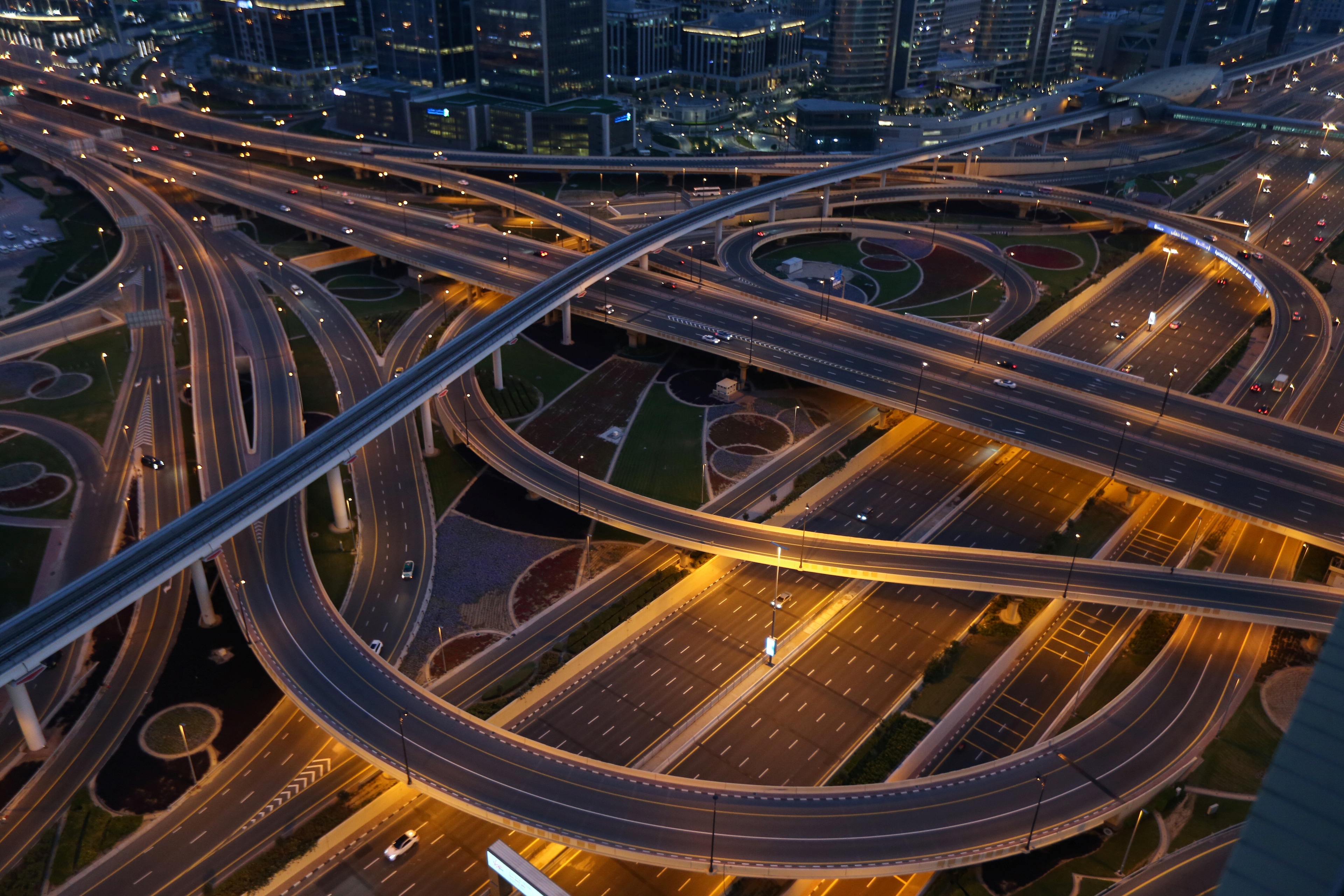Opinion
How this country is encouraging green mobility

The One Less Car trial sought to encourage people to use other forms of transport.
Image: Unsplash/Camilo Jimenez
- In Australia, 72% of journeys take place in cars, outpacing walking, cycling and public transport.
- In an attempt to cut car use, Uber Australia ran the One Less Car trial with behavioural scientists and other mobility and rideshare firms.
- Here are seven actions that city planners and leaders can focus on to support Australia’s green transition.
People love their cars in countries like Australia. The private vehicle dominates the transport landscape, with 72% of mobility trips taking place in a car, significantly outpacing walking or cycling (15%), public transport (13%) or rideshare and taxi (1%). But as we look to the future, there are several reasons to question if car dependence is sustainable.
For many years we have known that private car use is exacerbating numerous challenges in our cities, including congestion, carbon emissions and cost of living increases. There is a growing body of research that electric vehicles are an important part of the solution, but we must also shift the ‘one person, one car’ mentality to include walking, cycling, vehicle sharing and public transport. But how do we get there?
Cities around the world have been working to solve this issue for decades but advances in technology and transport services are putting cities in a better position to tackle the challenge head-on.
To accelerate the transition, Uber Australia wanted to understand the practical and behavioural barriers to having ‘one less car’ and designed an experiment to see how 58 people from across the country would adapt.
One Less Car mobility trial
Uber ran a first-of-its-kind trial, One Less Car, in partnership with behavioural scientists The Behavioural Architects, micro-mobility company Lime, e-bike subscription service Lug+Carrie and Uber Carshare.
The trial sought to explore the challenges and opportunities of car-light lifestyles, and it saw 58 everyday Australians give up one of their cars – going from one to zero, or two+ to one+ – and use other modes of transport as they went about their lives for four weeks.
Taking place from May to June 2023, the One Less Car trial reviewed thousands of expressions of interest before 58 Australians were selected across the country’s state/territory capital cities to participate. A range of people across different stages of life and car-ownership – between zero and two-plus cars – were included in the trial.
To offset their car usage, participants received a total of AUD1,350 ($870) in transport credits including public transport, a Lug+Carrie e-bike subscription (where available), an Uber One membership and credits for Uber, Lime and Uber Carshare. This amount was chosen to reflect the average yearly spend of about AUD16,000 associated with owning a car in Australia.
Making ‘four the norm’
Upon giving up their cars, the weekly average number of trips among trial participants dropped slightly from 21 to 19; however, the number of transportation modes used increased significantly, averaging four modes of transport.
Empty nesters tended to favour car-based modes in their top four mode mix. As one participant notes, “I enjoyed using Ubers and not having to drive myself after having a licence for 17 years and now being 76.”
Walking, cycling and rideshare were found to be the “most valued players” of the trial, with the latter two increasing 4-5 times in frequency of use. Participants’ step counts also increased, and they reported health and well-being benefits, while satisfaction with their communities increased by 10%.
As one participant said: “I continue to increase my walking on a daily basis, I have one very happy dog… I’m continuing to see the value of not having a second car.”

Across all the different trip occasions, participants reported they were able to replace the majority of car trips with alternative transport methods. Walking was the biggest replacement for personal car use, increasing 75%, while the largest proportional gains were cycling and rideshare increasing 4-5 times.
Using e-bikes was a new experience for many participants with one stating: “The e-bike was probably the biggest surprise for me, I ride the bike down to the ferry most days to get to work – I know a lot of people use them these days but I’d never really thought to try it.” Train and bus trips increased 156% and 86% respectively, and carshare use tripled.
How is the World Economic Forum promoting sustainable and inclusive mobility systems?
The research revealed three main barriers to going ‘car-light’ in Australia. These are:
- Inequitable access to transport alternatives
- Inconsistent quality, convenience and reliability of alternative transport
- The high perceived value and affordability of car usage
This last point appears to contradict reality, as Uber analysis suggests cars driven less than 5,000 km/year, of which there are 2.5 million in Australia, may not make financial sense for their owners. The hidden cost of car-ownership could be a primary cause of this perception-reality mismatch.
Reducing car dependency in Australia
In addition to “making four the norm”, Uber Australia is now encouraging city leaders to focus on seven key actions to support Australia’s transition to a car-light future.
The “big moves” that can have the biggest impact in the short term include:
- Invest in infrastructure to increases access for all: Make core modes like cycling, walking, ridesharing and public transport more attractive through small infrastructure projects and integration to increase access.
- Improve the quality, reliability and convenience of every trip: These are hygiene factors for choosing any mode of travel and travel choices must be available when people need them and without friction.
- Raise awareness of travel choices and emphasise the benefits: It isn’t enough for alternatives to the private car to be available, people need to be aware of their options and be incentivised or nudged to try something new.
- Target people ready to shift and scale what works: Cities need to target the people most ready to shift away from car use – for example, SINKS and DINKS [single income, no kids and double income, no kids] – to tailor interventions and scale up what works.
Looking ahead to a sustainable and lasting impact, Uber also urges planners and governments to:
- Enabling plans and strategies: The full suite of city plans and strategies must pull together to end the overreliance on the private car so that all people have four-plus travel modes to choose from no matter where in the city they live, work, study or play.
- Policy reform towards one less car: The full spectrum of government policies from health to education to city planning to be tweaked to enable people to make car-free choices.
- Bet on big mass transit projects: Corridor protection, planning and big project infrastructure spending to ensure people across our cities have access to fast and frequent transit services into the future.
Full results are captured in Uber Australia's white paper, One Less Car: Shifting to a Sustainable Transport Future.
Don't miss any update on this topic
Create a free account and access your personalized content collection with our latest publications and analyses.
License and Republishing
World Economic Forum articles may be republished in accordance with the Creative Commons Attribution-NonCommercial-NoDerivatives 4.0 International Public License, and in accordance with our Terms of Use.
The views expressed in this article are those of the author alone and not the World Economic Forum.
Related topics:
Forum Stories newsletter
Bringing you weekly curated insights and analysis on the global issues that matter.
More on Urban TransformationSee all
Muhammad Hassan Dajana and James Balzer
July 22, 2025
Olivia Nielsen
July 16, 2025
Luis Antonio Ramirez Garcia
July 14, 2025
Sam Markey, Basmah AlBuhairan, Muhammad Al-Humayed and Anu Devi
July 8, 2025
Jeff Merritt, Charlotte Boutboul and Marc Biosca
July 2, 2025




